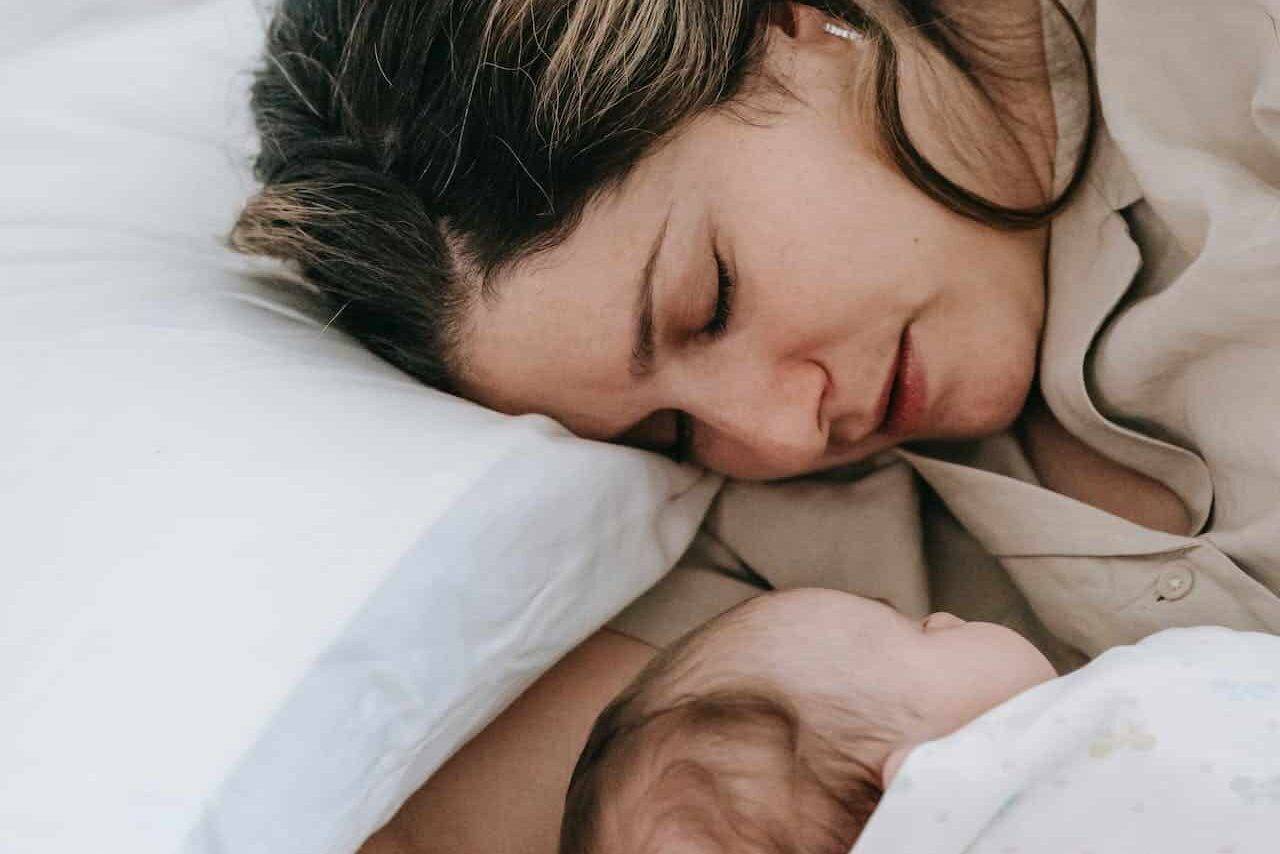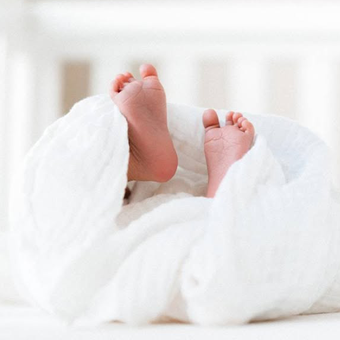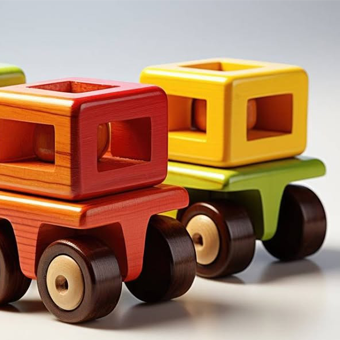Infant-parent co-sleeping: What do sleep arrangements mean for families?

This post is part of our series on Infant Sleep and its Impacts on Development, published in collaboration with the journal Infant Behavior and Development. The featured research appeared in a special issue on how infant sleep affects cognitive, social, and physical development and how parents and practitioners can help promote healthy sleep and development in infancy.
Key takeaways for caregivers
- Co-sleeping, typically defined as infants sharing a room or a bed with parents, is common worldwide but varies in acceptability across cultures. It is practiced less in U.S. culture and parents vary widely in how they view it.
- Pediatric organizations (e.g., the American Academy of Pediatrics ) do not endorse bedsharing, and although the AAP does not appear averse to roomsharing per se, research in Western cultures has linked persistent co-sleeping (i.e.., bedsharing, roomsharing, or a combination of both) beyond six months to parent and infant issues.
- Our research found a link between co-sleeping and more sleep disturbances among parents, especially mothers, which may occur in any culture where co-sleeping occurs.
- Co-sleeping was also associated with greater co-parenting distress and poorer quality of bedtime parenting, which may be more likely in cultures where co-sleeping is less accepted.
- Infants’ sleep did not appear to be affected by co-sleeping.
- Decisions about co-sleeping with one’s infant are ultimately personal choices. If practiced, co-sleeping should be done safely, following AAP guidelines, and co-sleeping parents should take steps to nurture their relationship as a couple.
Article contents:
- Questions about parent-infant sleep arrangements are complex
- Do infant sleep arrangements relate to infant and parent sleep quality or parenting behaviors?
- Parent-infant co-sleeping was linked to poorer maternal sleep and parenting issues
- Effects of parent-infant co-sleeping are likely to be culturally specific
- Promoting co-parenting and safe and healthy sleep may be most critical
1. Questions about parent-infant sleep arrangements are complex
How parents should structure their infants’ sleep and whether infants should sleep by themselves (in a separate room) or co-sleep with their parent(s) (i.e., in the same room or the same bed as the parent(s)) is a controversial, sensitive, and personal topic. At the heart of the matter are arguments about what is best for babies and beliefs about that vary widely.
These beliefs are informed by cultural prescriptions, recommendations from medical professionals who argue against bedsharing for safety reasons, evolutionary biologists who argue for bedsharing because it protects infants, individual parental beliefs, availability of sleep spaces and other practical considerations (e.g., convenience), and infants’ age. Adding to the confusion and controversy, in Western cultures, infant sleep arrangements are fluid during the first year, with parents more likely to co-sleep soon after birth than later. This makes it more challenging to identify whether a family co-sleeps.

Photo: Sarah Chai. Pexels.
Choices about where infants should sleep and for how long may not be just about what is best for the baby, but also about what is best for the family. Some studies suggest that parents who co-sleep with their infants may be at risk for marital and co-parenting distress. Parents, particularly mothers, who co-sleep with their infants also awaken more at night and have more sleep problems than do parents and infants who sleep in separate rooms.
2. Do infant sleep arrangements relate to infant and parent sleep quality or parenting behaviors?
Choices about infant sleep arrangements can be confusing and may be influenced by competing needs and demands. To better understand how parenting and infant and parent sleep affect family life, in our recent study, we examined sleep arrangement patterns across infants’ first six months of life.
We assessed 124 U.S. families when infants were one, three, and six months old. Most mothers and fathers were White (8%), married or living with a partner (95%), and in their 30s; 57% of the infants were girls. Ninety-nine percent of parents had completed high school and about two-thirds had a bachelor’s degree or higher. Most fathers (89%) and mothers (61%) mothers worked full or part time when their babies were one month old; median yearly family income was $65,000.
To measure participants’ nighttime sleep, we used activity monitors (actigraphs) that parents wore on their wrists and put on infants’ calves at bedtime for seven consecutive days. We also measured mothers’ emotional availability with their infants (e.g., warmth, sensitivity) during infants’ bedtimes (from video recordings made by parents). Mothers also completed questionnaires to assess the quality of positive co-parenting (e.g., support and endorsement of one’s partner) and negative co-parenting (e.g., amount of conflict with and undermining by one’s partner). Infant sleep arrangements were determined from the video recordings of the infants at night.
It is parents’ sleep, and particularly mothers’ sleep, that may be affected most by co-sleeping.
3. Parent-infant co-sleeping was linked to poorer maternal sleep and parenting issues
From the video recordings when babies were three and six months old, we identified three patterns of sleep arrangement: solitary sleeping (infants slept in a room separate from their parents at both ages), co-sleeping (infants slept in the same room or the same bed as their parents at both ages), and co-sleeping to solitary sleeping (infants roomed with or shared a bed with a parent at three months and were moved to a room of their own by six months).
Babies who slept in the same room as their parents rarely spent all their time on a sleeping surface separate from their parents, even with a crib in the room. Videos showed that mothers frequently brought their babies to the parents’ bed in response to infants’ distress, with infants falling asleep in the parents’ bed without being immediately returned to the crib.
Consistent with other research, co-sleeping families were more likely than the other two groups to have lower socioeconomic status, be non-White and unemployed, and have fewer years of education. We also saw patterns relating to duration of breastfeeding and parents’ symptoms of depression and anxiety. We used statistical techniques to consider those patterns and explore specific relations between co-sleeping and both sleep quality and co-parenting, finding that:
- Mothers had poorer sleep quality if they co-slept. Fathers who co-slept with their infants experienced more varied sleep quality across the week than fathers whose infants slept alone.
- Infants’ sleep quality was not related to sleeping arrangement at all.
- Mothers reported less positive and more negative co-parenting, and were observed to be less emotionally available to their infants at bedtime.
Our results are consistent with other work showing that compared to non-co-sleeping, persistent co-sleeping is linked to poorer parental sleep, particularly mothers’ sleep, and with more co-parenting distress and less emotionally available parenting.

Photo: RDNE Stock project. Pexels.
Our finding that infants’ sleep was unrelated to sleep arrangement indicates that it is parents’ sleep, particularly mothers’ sleep, that may be affected most by co-sleeping. This does not bode well for long-term maternal well-being: Chronic sleep problems can increase individuals’ risk for depression, which can affect relationships with other family members.
4. Effects of parent-infant co-sleeping are likely to be culturally specific
Our study was done in the United States, a culture that, by and large, does not support persistent co-sleeping. Parents who engage in persistent co-sleeping in a culture that does not support it may be criticized for engaging in a practice some consider harmful to babies – despite that fact that our study did not find any negative associations between co-sleeping and infant sleep.
Such criticism is based solely on the tendency of members of a culture to accept a cultural prescription as “the right thing to do” without supporting evidence. Researchers should replicate our study in a culture in which co-sleeping is more accepted to determine whether findings are similar or different.
When co-sleeping is culturally embraced, parents who co-sleep are less likely to be criticized by family members and friends.
We suspect that the link that we found between co-sleeping and heightened sleep disturbances among parents, especially mothers, would be culturally ubiquitous, but the links among co-sleeping, co-parenting distress, and reduced maternal emotional availability with infants at bedtime would not. This is because sleeping near one’s infant is likely to affect parents’ sleep, regardless of the cultural backdrop.
In contrast, the association of co-sleeping with heightened family stress should be less likely when co-sleeping is culturally accepted. For example, when co-sleeping is culturally embraced, parents who co-sleep are less likely to be criticized by family members and friends.

Photo: Kevin Liang. Unsplash.
5. Promoting co-parenting and safe and healthy sleep may be most critical
Do these findings lead us to recommend that parents not co-sleep with their infants? Assuming parents follow medical recommendations for safe sleep (e.g., the AAP guidelines; i.e., avoiding bedsharing, eliminating loose bedding and clothing, and placing infants in a supine position on the sleeping surface), we do not make such a broad recommendation.
Although our study’s co-sleeping parents as a group appeared to be at higher risk for family distress than were parents who slept without their babies, even when they said they preferred to co-sleep, some parents who co-sleep did not experience heightened co-parenting distress, nor were they less emotionally available to their infants at bedtime than parents of infants who slept alone.
It appeared that these parents were on board with their choice of sleep arrangement. The parents’ relationship with each other was not compromised, which suggests that they took time to nurture their relationship as a couple (e.g., not just in terms of co-parenting but by making time for themselves and each other) and that co-sleeping with their infants did not interfere.
Thus, to the extent that parents are aware that co-sleeping can interfere with their sleep and their relationship as a couple, and take steps to promote each other’s sleep and their relationship with each other, the choice to co-sleep may not be at all problematic. We did not conduct interviews or collect information about this idea and believe it would be an important question to explore.
















Leave a comment